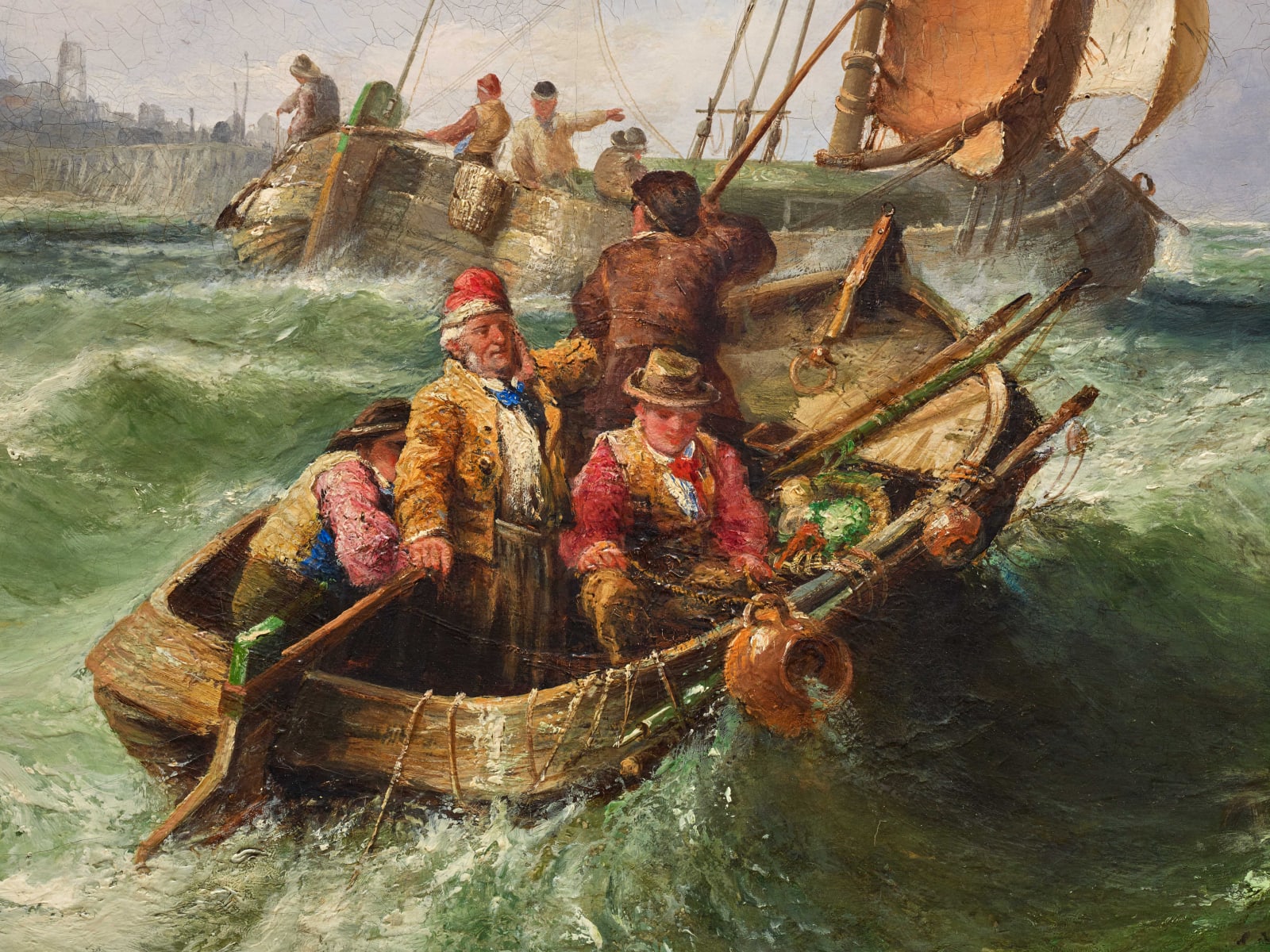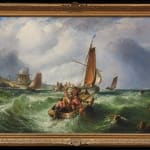John Cheltenham Wake
Further images
John Cheltenham Wake (1837-1882)
Fishing off the Coast
Oil on canvas,
signed and dated lower left: Cheltenham Wake 1867
80 x 125.5 cm.
John Cheltenham Wake’s dramatic maritime view of fishermen off the coast demonstrates his understanding of his subject in which he cleverly describes the choppy waters and the bright morning light. In the central foreground is a small rowing boat laden with fisherfolk who lower and hoist their pots in the hope of catching lobster or crabs. Beyond are various fishing craft whose sails stand out against a cloud laden sky. Given the subject matter with what appears to be the White Cliffs of Dover seen in the far-right hand distance and the tower on the near shore as well as the fact that the work is date 1867, it is most likely that this was his exhibition piece shown in London, 1867 at the Society of British Artists under the title “Morning after the Storm, Off Calais”. In total, Wake showed seven works at the Society of British Artists from 1864 up until the winter of 1875/6, with titles ranging from “On the Dutch Coast” to “Tantallon Castle”. He also exhibited three works at the British Institution, London. Whilst Wake made his name for his coastal and maritime views around the British Isles and on both sides of the English Channel, he also travelled to the Continent where, for instance, he painted some of the major cities, from Rouen and Calais to Antwerp, Cologne and Heidelberg. He also painted a variety of genre scenes, both contemporary views but predominantly of society figures in historical dress, sometimes in an interior or preparing for a duel set against the Villa Medici. On occasion, he painted Oriental subjects in which an Arab lady is seen reclining while his repertoire also included scenes inspired from Shakespeare.
Wake was born in Middlesex, England in 1837; though he travelled extensively abroad his roots were in the south of England, where he moved from Middlesex and Erith in Kent to Lewisham and central London, eventually dying at his home in Shepherds Bush in 1882. He and his wife Clara, whom he married in 1862, had one child named Herewald who having pursued a career in insurance eventually became a sign writer. Wake had a strong sense for composition whose marine views usually showed choppy rather than calm seas. At times, his coastal landscapes were more serene but nevertheless these focused upon the dramatic as evidenced by his depiction of Mont St Michel, where fisherfolk on the sands are dwarfed by the edifice beyond. The same drama is also captured in his “Landing the Catch” of 1882 which was acquired by Leicester Arts and Museums Service and is now housed in the New Walk Museum & Art Gallery.





